Description
Man catchers were used for hundreds of years by European and early American law enforcement to capture and subdue criminals. They were known to have been used as far back as ancient Rome. Extremely effective for their intended purpose, they were, however, rather cruel to those they were used upon and often resulted in serious injuries. The principle is quite simple: the U-shaped collar would slip over the neck of the person to be apprehended. The one-way springs allow the neck to go through, but do not allow it to come back out. Once ensnared, any attempt at escape would be both painful and fruitless. This example features a U-shaped head formed of a forged flat iron bar with scrolled finials. Springs are riveted to the ends of the “U” and have nail-like pins attached, which pass through holes in the “U”; the nail heads preventing the spring from being bent out of the way. A conical mounting ferrule is riveted to the base of the “U” for mounting on its original round-section wood shaft. Four long langets nailed to the shaft provide additional support. Shaft retains its original base spike (ferrule missing), traces of its original black paint, and remnants of its original leather covering. Shows great age; the metal with dark rust patina, shaft with scattered worming and bent at its lower end. Length of metal 50 1/4” (127.6 cm), overall 86” (218.4 cm). Surviving examples in private collections are very scarce, especially with original shaft.

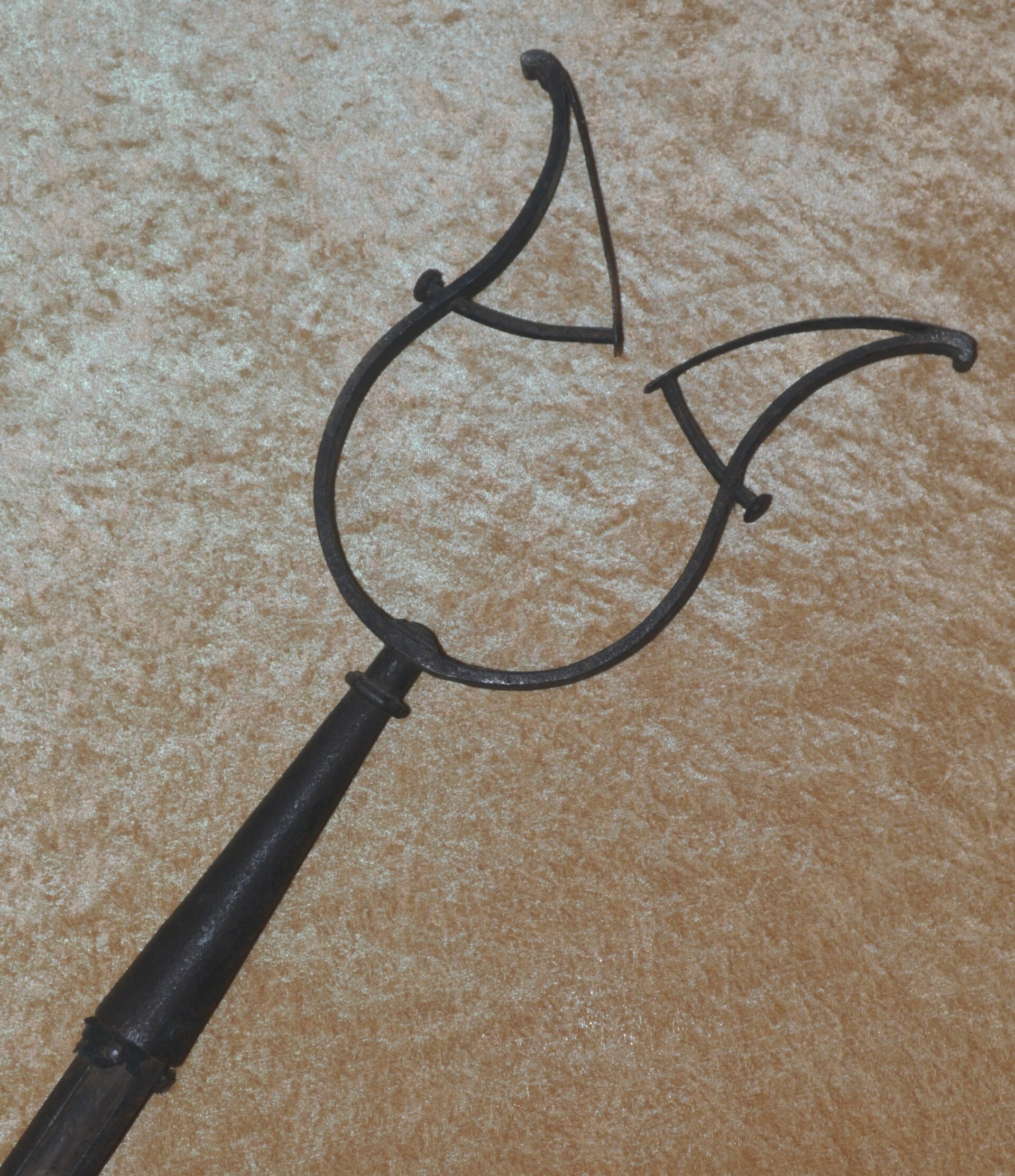
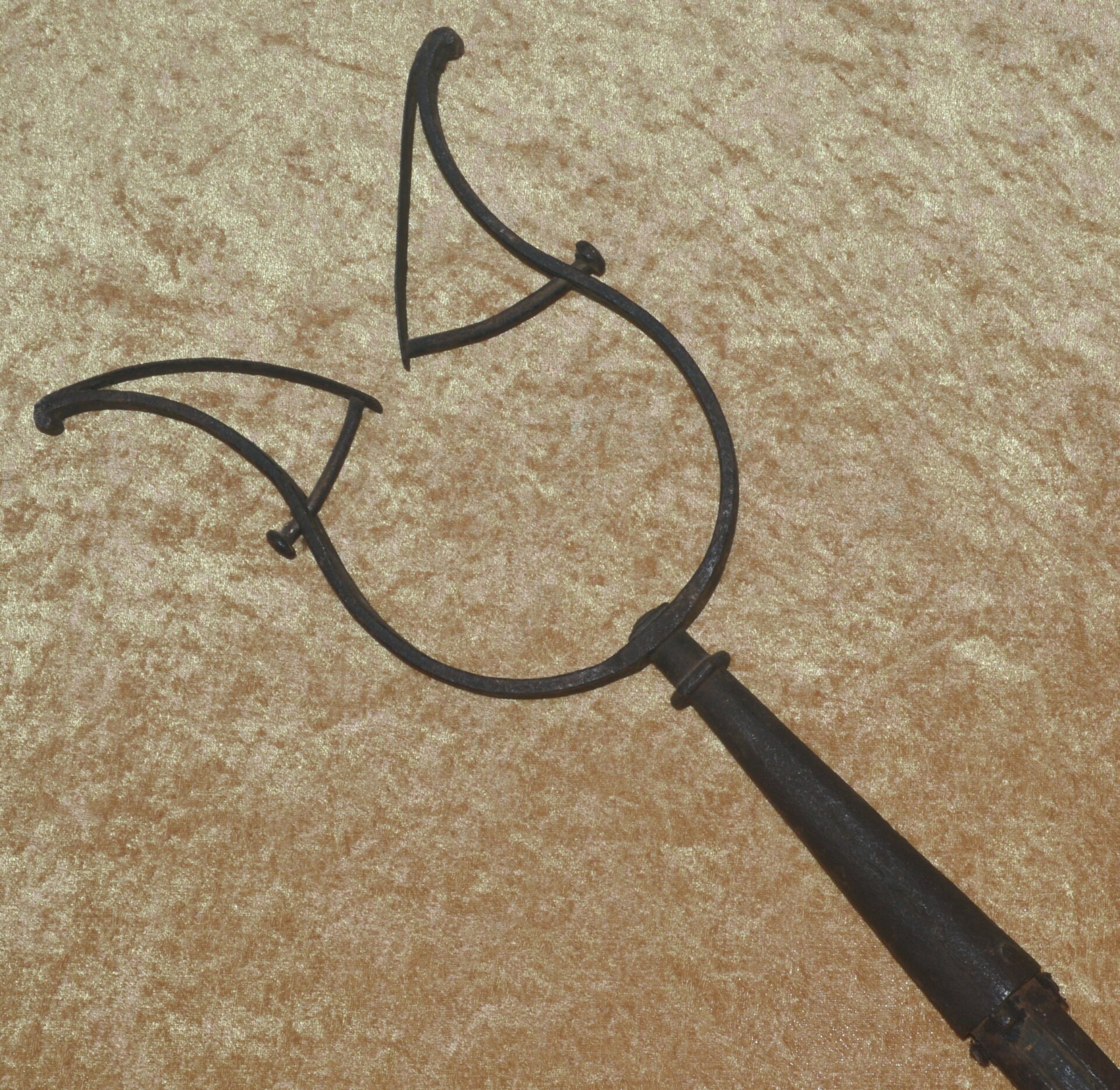
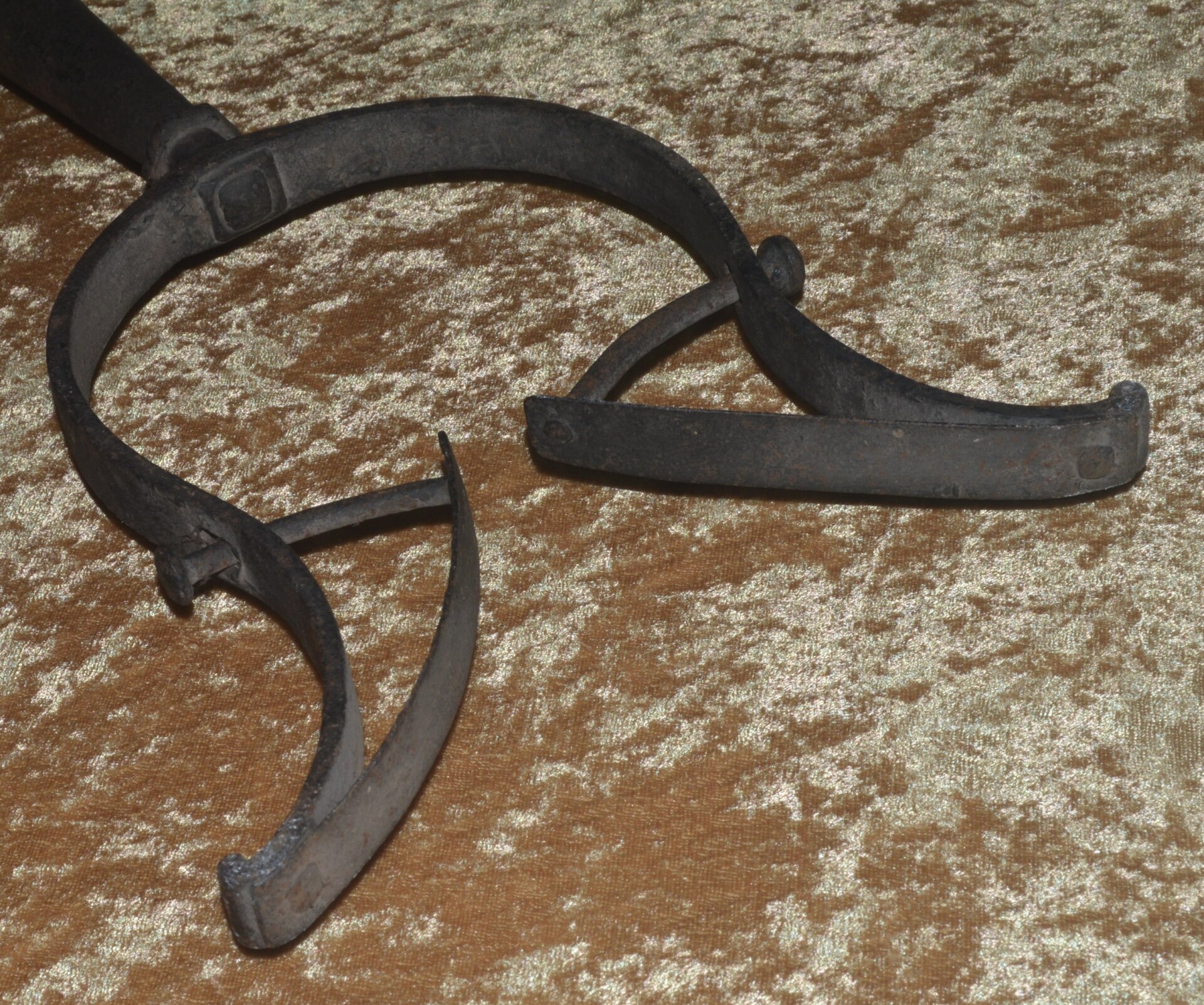
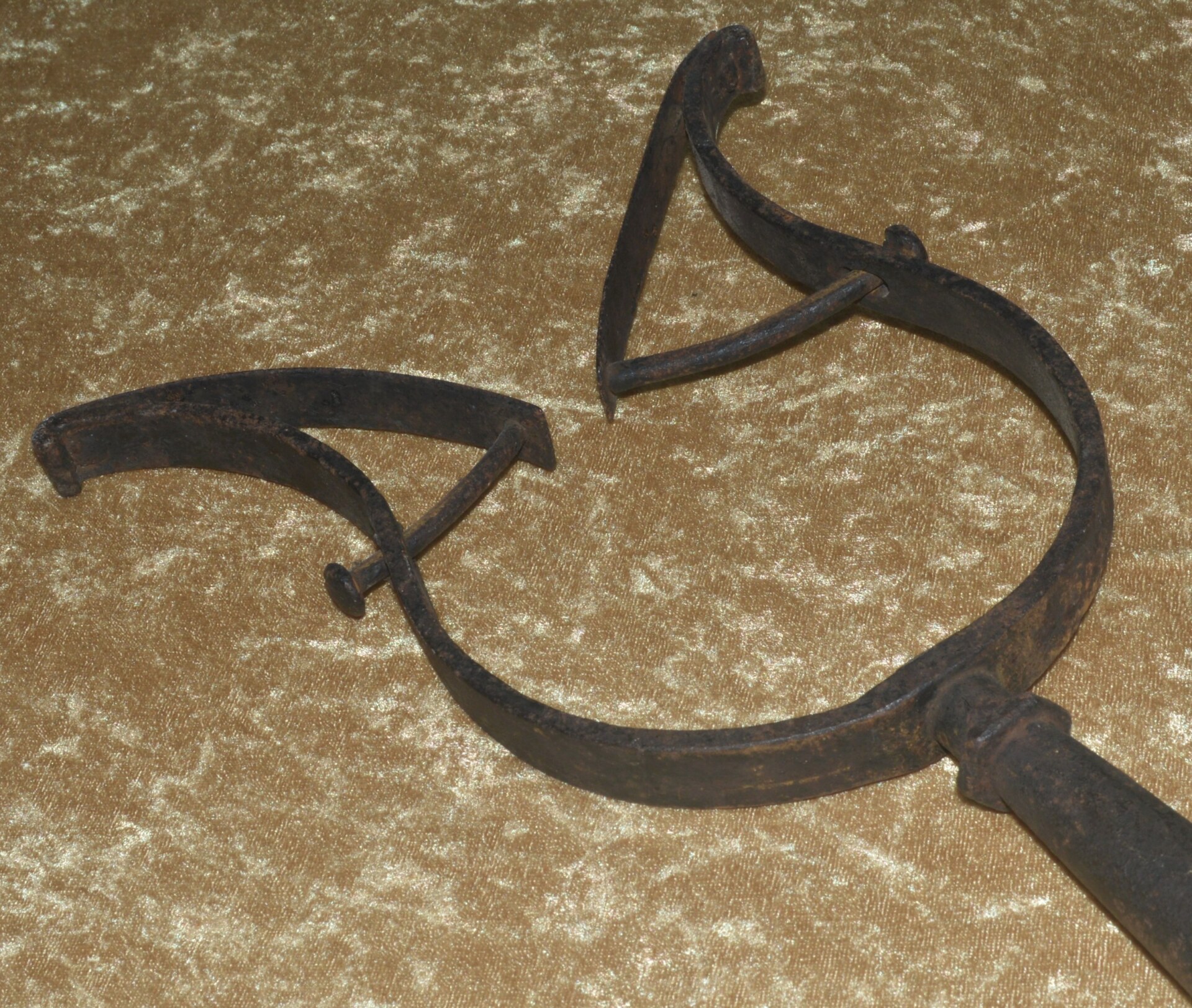
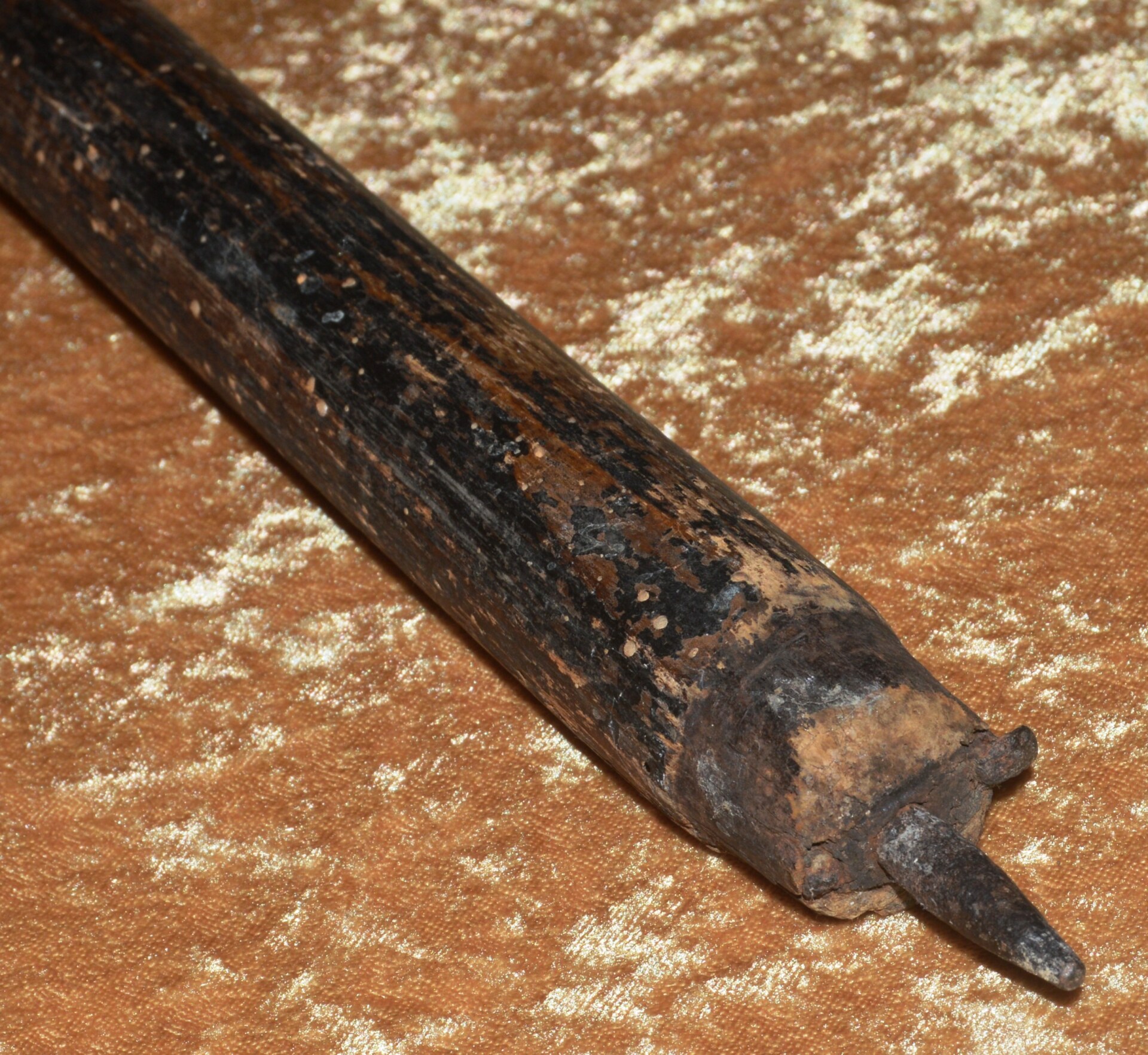
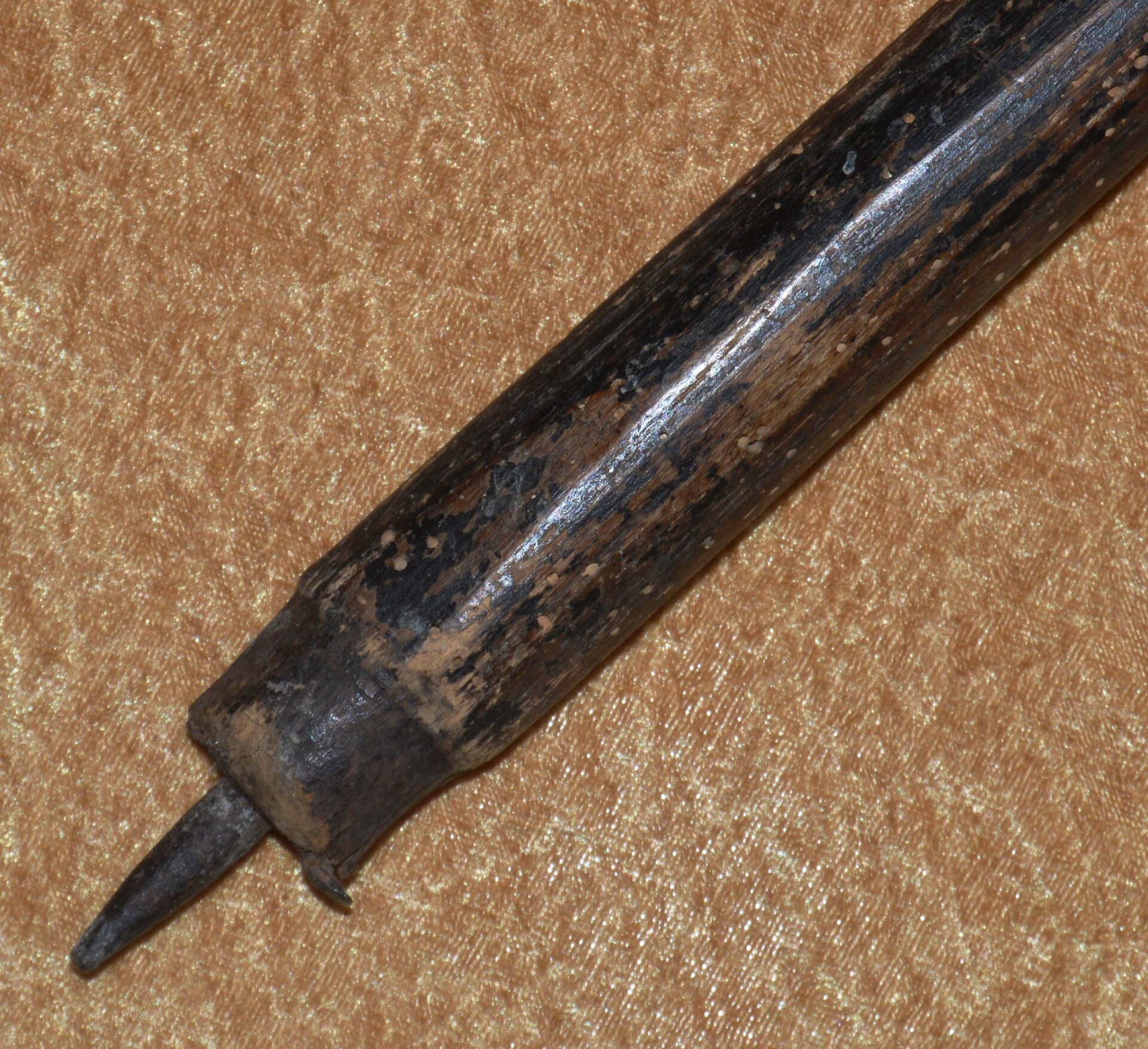

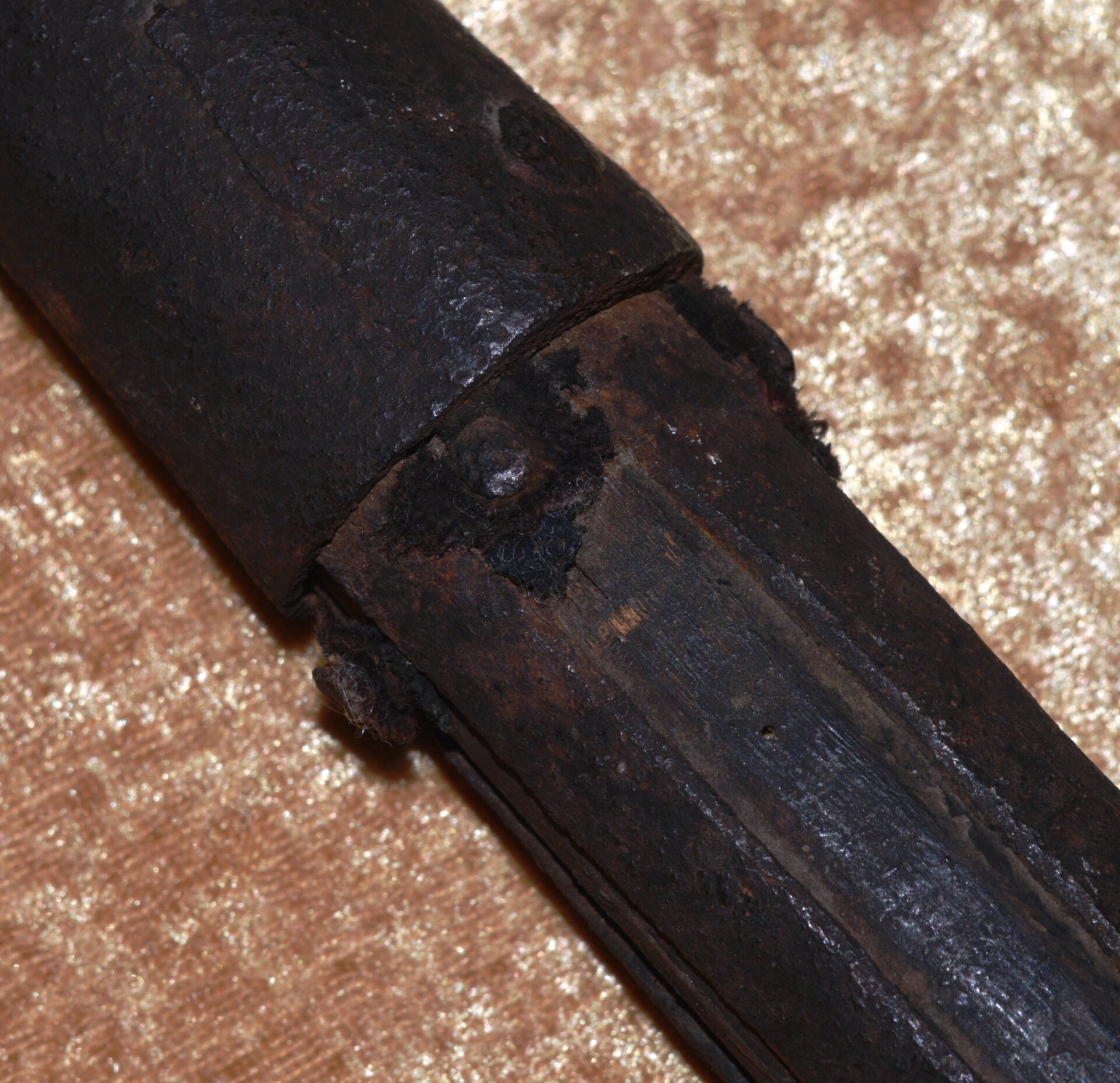
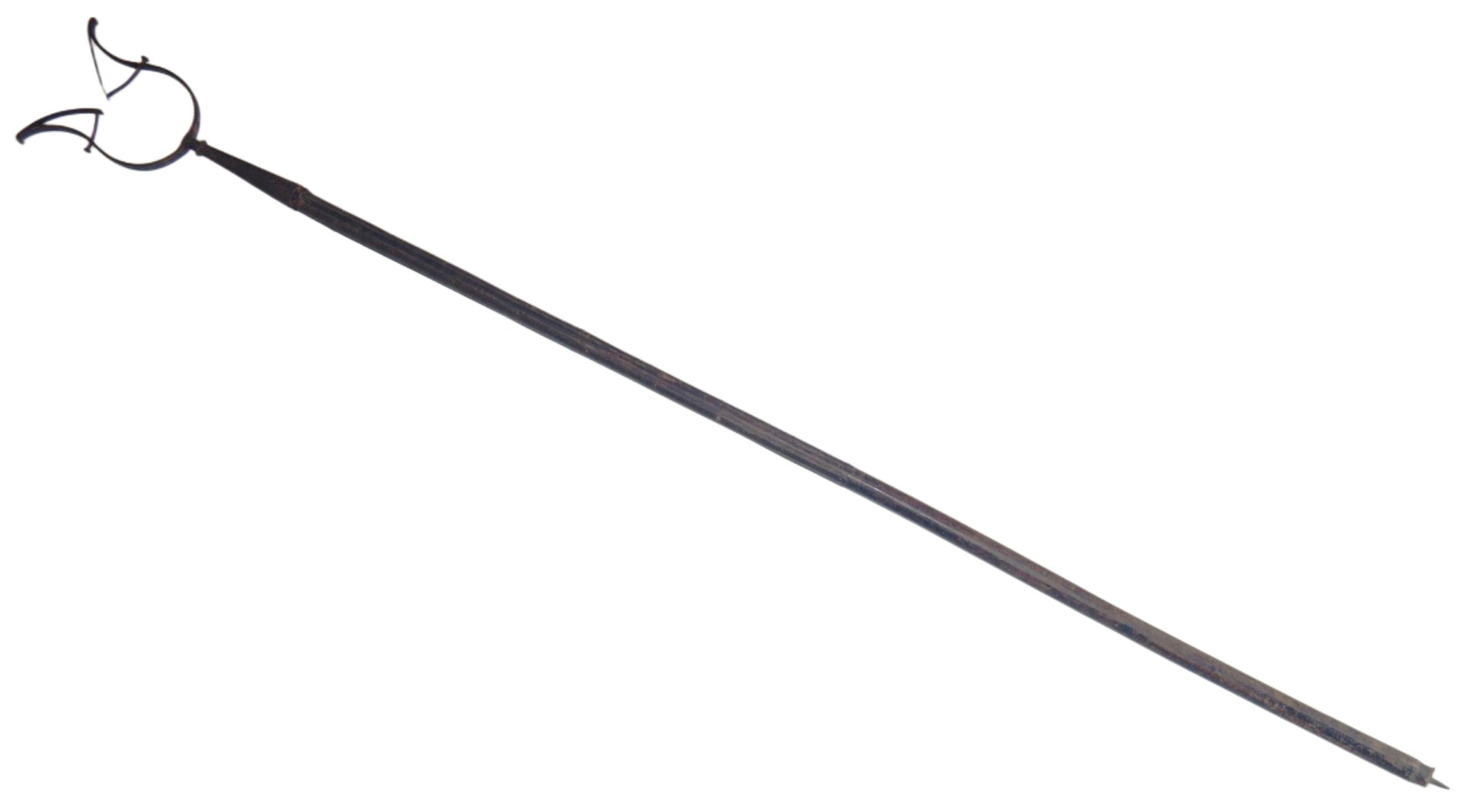
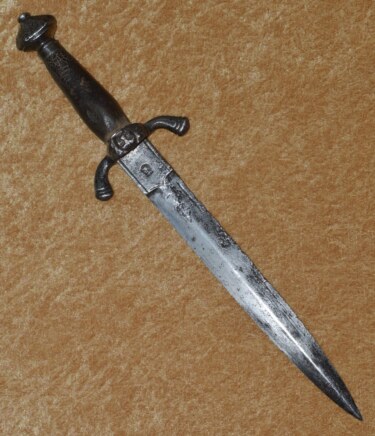 Left Hand Dagger, Late 16th C, Probably German
Left Hand Dagger, Late 16th C, Probably German 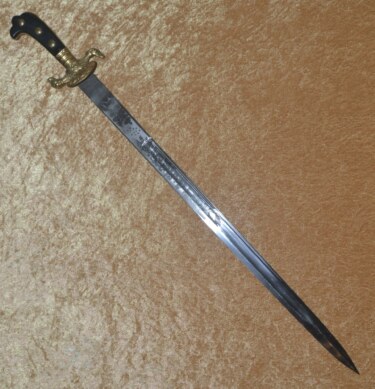 Fine German Hunting Sword, 20th C
Fine German Hunting Sword, 20th C 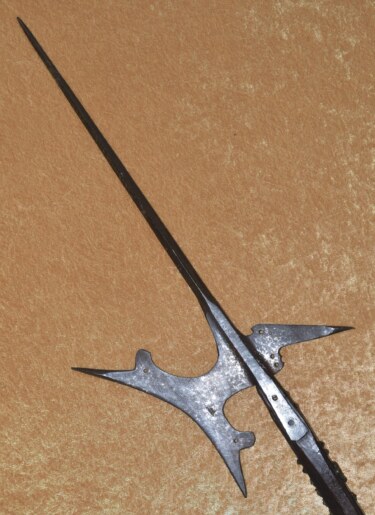 European Halberd, Late 16th C, Probably Italian
European Halberd, Late 16th C, Probably Italian  Historic English Oak Tester Bed from Podenhale Manor, 17th C and Later
Historic English Oak Tester Bed from Podenhale Manor, 17th C and Later